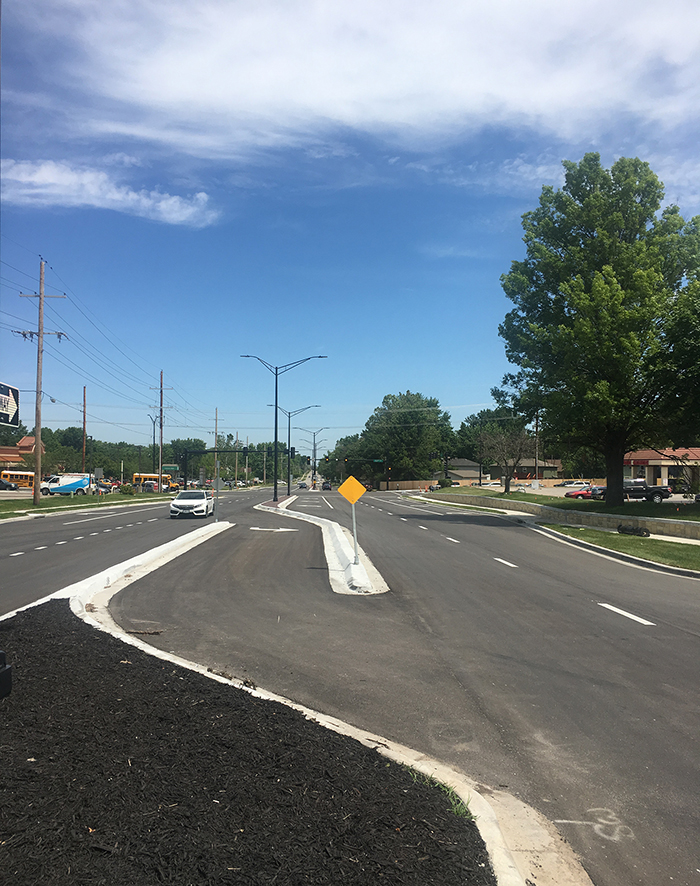The City of Olathe Improves Roadway Capacity to Support Growth
Posted on Wednesday, June 12th, 2019 by Affinis CorpIn Roadway, Traffic, tagged in

For years, the City of Olathe, Kansas has continued to grow, adding businesses and residential areas across the community. However, the influx of residents has placed a strain on some of their infrastructure.
The intersection at 151st and Mur-Len was no exception. It had regular congestion, and with growth planned to the South, the city anticipated demands would only rise. As a result, they wanted to increase capacity and safety for this congested area.
Before making changes, the city started the project by conducting a study with Affinis. It examined the impacts of new right-turn lanes (RTLs) at all four legs of the intersection, comparing it to a roundabout. Based on our findings, the city ultimately decided the additional RTLs were the best option.
Following the study and preliminary design, the project was put on hold for three years, while the city procured funding. After the Kansas Department of Transportation (KDOT) became a partner on the project, the site was extended 600 feet to the west to include a KDOT intersection safety improvement project at 151st and Scarborough St. In response, our design team revised the plans to incorporate the new area, adding a westbound left-turn lane here.

To improve safety and capacity at 151st and Mur-Len, right-turn lanes were added to all directions of the intersection. The outside southbound lane was extended to 151st Terrace to give drivers a greater opportunity to merge after the intersection to eliminate racing for position. Additionally, the left-turn lanes in both the north and south directions were lengthened to improve the capacity.

In an effort to improve safety, some of the driveways that were too close to the intersection were closed, and the median was extended along the south leg to eliminate the left-turning movement for others. Positive access control at arterial intersections increases safety and capacity for motorists. As a driver navigates an intersection, reducing the number of conflict points improves the overall safety of the intersection.
Part of the city’s trail system runs along the north side of 151st Street and was improved even with tight right-of-way on the northeast corner of the intersection. In addition to the geometric improvements, the project included design of signals, storm sewer improvements, a retaining wall, ADA sidewalks, street lighting, pavement marking, permanent signing, Advanced Traffic Management System (ATMS) interconnect, and preparation of a traffic control plan.
The finished project achieves all of the city’s goals. The roadway is safer and able to handle an increased capacity of traffic.
